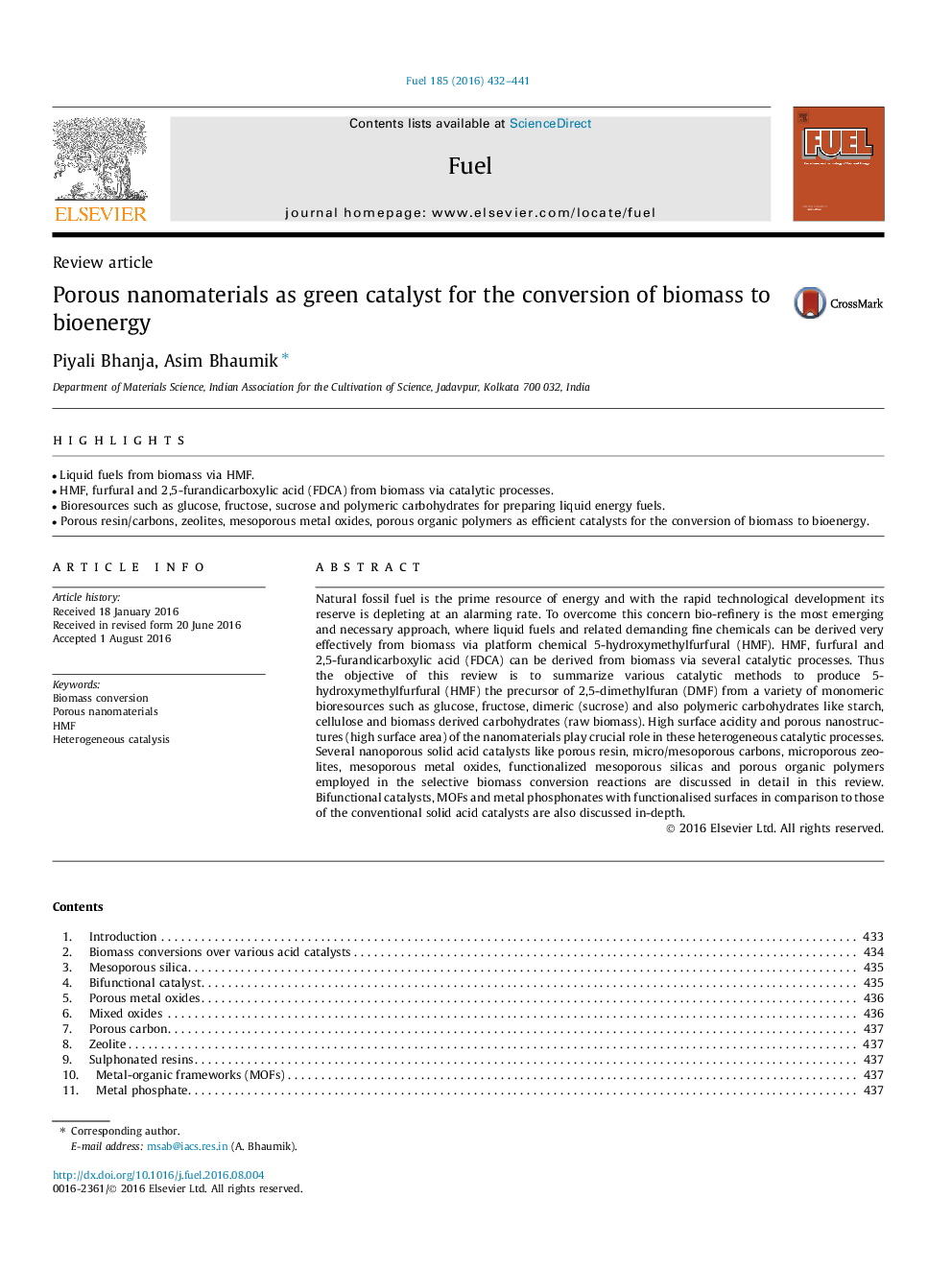| Article ID | Journal | Published Year | Pages | File Type |
|---|---|---|---|---|
| 6632720 | Fuel | 2016 | 10 Pages |
Abstract
Natural fossil fuel is the prime resource of energy and with the rapid technological development its reserve is depleting at an alarming rate. To overcome this concern bio-refinery is the most emerging and necessary approach, where liquid fuels and related demanding fine chemicals can be derived very effectively from biomass via platform chemical 5-hydroxymethylfurfural (HMF). HMF, furfural and 2,5-furandicarboxylic acid (FDCA) can be derived from biomass via several catalytic processes. Thus the objective of this review is to summarize various catalytic methods to produce 5-hydroxymethylfurfural (HMF) the precursor of 2,5-dimethylfuran (DMF) from a variety of monomeric bioresources such as glucose, fructose, dimeric (sucrose) and also polymeric carbohydrates like starch, cellulose and biomass derived carbohydrates (raw biomass). High surface acidity and porous nanostructures (high surface area) of the nanomaterials play crucial role in these heterogeneous catalytic processes. Several nanoporous solid acid catalysts like porous resin, micro/mesoporous carbons, microporous zeolites, mesoporous metal oxides, functionalized mesoporous silicas and porous organic polymers employed in the selective biomass conversion reactions are discussed in detail in this review. Bifunctional catalysts, MOFs and metal phosphonates with functionalised surfaces in comparison to those of the conventional solid acid catalysts are also discussed in-depth.
Related Topics
Physical Sciences and Engineering
Chemical Engineering
Chemical Engineering (General)
Authors
Piyali Bhanja, Asim Bhaumik,
